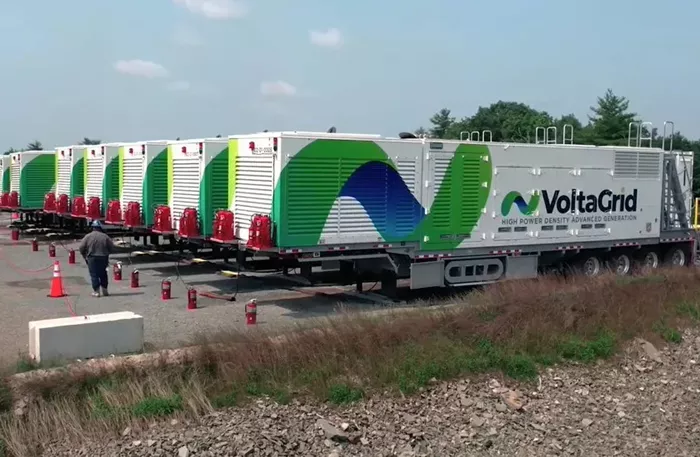Elon Musk’s Memphis Supercluster has officially launched, positioning itself as the most powerful AI training facility globally. Musk’s ambitious setup boasts a staggering 100,000 liquid-cooled H100 GPUs interconnected via a single RDMA fabric, setting a new benchmark in computational power.
The operational demands of such an advanced facility are equally monumental. Each H100 GPU requires at least 700 watts, translating into a total electricity demand of over 70 megawatts to support simultaneous operation, excluding additional power needs for servers, network infrastructure, and cooling systems. However, due to an incomplete power supply agreement with the local grid, Musk’s facility currently relies on 14 large mobile generators for its energy needs.
Dylan Patel, an AI and semiconductor analyst, initially raised concerns on social media about the Memphis Supercluster’s operational viability due to these power constraints. Patel noted that the facility is currently drawing only 7 megawatts from the grid, sufficient to power approximately 4,000 GPUs. The Tennessee Valley Authority (TVA) is set to provide 50 megawatts by August 1, contingent upon xAI finalizing the necessary agreements. Patel also highlighted that the 150-megawatt substation at the xAI site remains under construction and is expected to be operational by late 2024.
In a follow-up tweet, Patel revealed that Musk has implemented a temporary solution involving 14 VoltaGrid mobile generators connected to what appears to be four mobile substations. Each generator, the size of a semi-trailer, can supply 2.5 megawatts, collectively providing a total of 35 megawatts. Combined with the 8 megawatts sourced from the grid, the facility currently has access to 43 megawatts of power, adequate for operating up to 32,000 GPUs at reduced capacity.
With the anticipated 50 megawatts from TVA in early August, Musk’s supercluster will be capable of supporting 64,000 GPUs simultaneously. However, to fully utilize 100,000 GPUs, a total of 155 megawatts is required. This implies that xAI will need either expedited completion of the substations or additional mobile generators to meet the demand.
The environmental impact of such immense power consumption is a significant concern. The power usage of all GPUs sold for data centers in 2023 alone exceeds the combined consumption of 1.3 million American households, placing substantial strain on the power grid. Building new power plants alone is insufficient; data centers also require extensive infrastructure, such as high-voltage transmission lines and substations, to efficiently deliver electricity from generation sources.
Moreover, greenhouse gas emissions from data centers are a growing issue. Musk’s mobile generators, which run on natural gas, are cleaner than coal or oil but still contribute to carbon emissions. Recent reports indicate that Google’s carbon footprint has surged by 48% since 2019 due to energy demands from its data centers, suggesting that xAI could face similar environmental challenges unless cleaner energy alternatives are adopted.
Musk’s goal with xAI is to lead in AI development, and he appears committed to achieving this despite current challenges. The temporary use of mobile generators underscores the urgent need for a transition to cleaner energy sources. With TVA offering a mix of nuclear, hydroelectric, and fossil fuel power, xAI’s environmental impact could be reduced significantly if it moves away from reliance on natural gas-powered generators in favor of TVA’s diverse energy mix.
Related topics:
- Caterpillar C27: The Comprehensive Review
- What Is the Operational Costs of Diesel Generators?
- 3 Best Kohler Whole Home Generator In 2024
- Toshiba to Supply Gear for Patuha 2 Geothermal Project, Indonesia
- Texas Lawmakers Criticize CenterPoint’s $800M Generators—Despite Approving Them
- Breakthrough in Offshore Hydrogen Production as Wind Turbine Directly Powers Electrolysers
- Mill Valley Residents and PG&E Face Complaints Over Loud Generators
- Vodafone Ukraine Adds 600 Generators and 22,000 Batteries

